We live in a golden age for travel. Never has the world been so accessible to so many. Growing middle classes in previously impoverished nations are taking to the road at the same time discount airfares, packaged tours, and generally improving travel infrastructure everywhere are making destinations more accessible to everyone. It’s a trend that’s proven so successful that it can’t possibly continue.
Many popular destinations have already reached their carrying capacity. Beyond some point it becomes physically impossible to cram one more hotel or restaurant into already crowded neighborhoods. In some places it’s becoming impossible to even cram one more body.
We know this from first hand experience. It just so happened that many of the cities on our itinerary this year also happened to be major cruise ship destinations. What we discovered is that modern cruise ships are so large, carrying as many as six thousand passengers each, that even a single ship can easily overwhelm a small city with tourists. The morning we left Venice, Italy, we counted five already in port.
With so many ships unloading so many passengers onto the narrow city streets of so many formerly quaint old towns, we learned quickly to start planning our day’s activities around cruise ship schedules. On the heaviest days we’d try to avoid the most popular attractions or, better yet, get out of town altogether.
But as annoying as tourist crowds are for other tourists like us, they’re much worse for locals who have to deal with the throngs day in and day out. Increasingly, locals are starting to push back.
It seems hardly a week goes by where we don’t read an article detailing some form of new tarnish accumulating on our golden travel age. Whether it’s due to the boorish behavior of party travelers or the way services for tourists tend to crowd out those for residents, there’s a growing sense in many popular destinations that tourism needs greater regulation and probably more restrictions.
An aptly named New York Times article, The Revolt Against Tourism, recounts the imposition of quiet zones in Denmark and a one-year ban on new tourist accommodations in Barcelona. Elsewhere, access to the most popular attractions is being limited by the introduction of strictly timed tickets or by other measures.
And while such limits are clearly needed to prevent the world’s most beloved treasures from being loved to death, tourist restrictions aren’t without costs. It’s a universal economic truth that when you limit the supply of any good or service you necessarily increase its price. With fewer new hotel rooms opening in Barcelona, for example, existing rooms will be in greater demand and hotel owners will have a freer hand to charge more.
And higher prices for tourist services are not necessarily an unintended consequence. They’re part of the design. If the cheapest rooms in town run $200 per night, far fewer people will choose to travel there. And that’s the whole point.
One country has followed that logic all the way to its extreme conclusion and serves as an example to all the rest. To gain entry into the Himalayan Kingdom of Bhutan all travelers are required to book a tour with an approved agent and spend a minimum of $200 per person per day. There are no budget travel options in Bhutan.
By raising the price of travel in this way Bhutan has successfully controlled the number of visitors to the country without needing to impose a hard limit on how many travelers can enter. Instead of allowing mass market tourism to inundate and overwhelm its country, Bhutan has focused on nurturing what it calls “high quality” tourism. Others may know it better by it’s more traditional name as luxury travel. Still others may simply call it unaffordable.
But it’s hard not to think that Bhutan is on to something. As more and more of the world’s best destinations try to cope with the downsides of mass tourism, Bhutan’s model offers one intriguing alternative. It has the potential to keep tourist dollars flowing while cutting down on the crowds and all the problems they bring. That just might be the holy grail of tourism. And to capture it, all countries need to do is one simple thing: raise their prices.









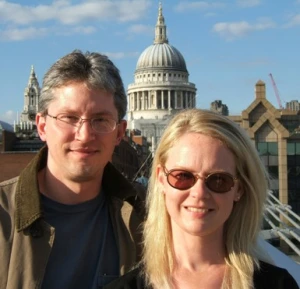

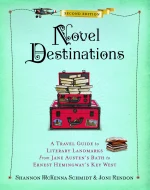


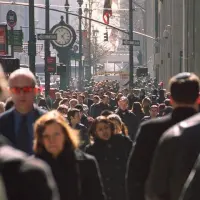
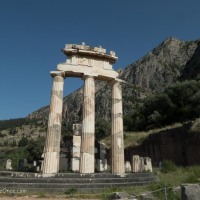


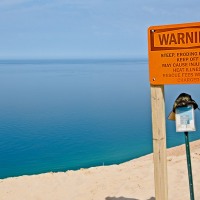
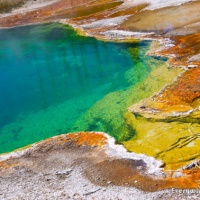

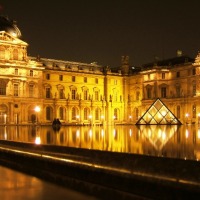
There was an interesting article in the Guardian a few weeks ago along these lines (here) — one of the things it pointed out that I hadn’t thought of before is that the daytrippers in Venice don’t really contribute much to the place financially, often just a meal and maybe a museum entry fee. So something clearly needs to change if the place is going to survive. On the other hand, it also points out that in places where people do stay the night, airbnb makes it difficult to really cap the number of beds for tourists, so maybe you really do need to take a top-down approach like Bhutan…
LikeLiked by 1 person
I’m surprised that cruise ships don’t have to pay a hefty docking fee to the city. If they don’t, imposing one would be a really easy way to make at least those specific “day trippers” pay for the services they use.
LikeLiked by 1 person
Interesting post. Thank you. I go back and forth on how I feel about this. And I had heard about Bhutan and other places doing this. I do hate crowds though sometimes so I can understand it from both the local and travelers perspective.
LikeLiked by 1 person
Very interesting, thanks for the post.
LikeLiked by 1 person
Thanks for reading
LikeLike
What an interesting take on tourism!
From an economics standpoint, the local economies surely profit from tourism at this point in time, but the long term affects are always hard to accurately gauge. I think timed entries are great and so very efficient in most cases, but I still see crazy long lines of people hoping to get those last spots in case someone doesn’t show up which can be a problem.
I think Bhutan is too extreme. People will want to travel and learn about Bhutan and now they are discriminating against poor backpackers and other frugal travelers. I guess I wont be going there anytime soon!
Thanks for sharing this news.
-Amanda at http://teachingwanderlust.com/
LikeLiked by 1 person
Everyplace will have to find its own balance. Bhutan is, perhaps, too restrictive while other places are likely too permissive. But what’s increasingly clear is that the world’s tourist population keeps growing while the capacity of it’s top destinations remain unchanged. We’re fast approaching a tipping point where places will need to ration access in one way or another. Placing hard limits on the number of visitors and creating long lines is one way. Pricing people out of the market is another. My guess is that most places will eventually use a combination of both techniques to control the crowds.
LikeLiked by 1 person
As a resident of Amsterdam, another hugely popular tourist destination, I do sometimes feel overwhelmed by the crowds in the tiny city center, while at the same time loving to live in a city where everybody wants to visit. I really think there should be a regulation on how many people can disembark from a ship at a city port at any one time because cruise ships are getting ridiculously bigger (unlike busses that can only get so big until it’s undrivable).
LikeLike
I agree with everything, especially the part about the cruise ships. They’ve become monstrosities.
LikeLike
Great topic. Just an idea off the top of my head: Not sure how it could be implemented but a sliding scale of spend over time may help strike a balance between same day/ short term trippers and those who like to travel slow for less.
Lets say you deposited $300 in a city pass, that doubles as a debit card to use for food, tours, accommodation etc. If you spend it all in a day great. If not 50% of the balance goes to charity, 50% to improved infrastructure, bike share schemes, positive improvements. If you stay 2 days requires $400 deposit, 3 days,$500. 7 days $700. With new payment technologies this is doable, to lock it to geographical limits and the original purchasers.
Could that work?
LikeLike
Hi Jason,
Technologically something like that could clearly work. The challenge would be in implementation. You’d have to build an entire infrastructure to enforce the purchase of the card. That would be a tall order. It’s the same problem places would have in trying to mimic Buhtan’s tourism policy. Instead we’ll probably see a patchwork for regulation and fees/taxes that are introduced with varying levels of enthusiasm and effectiveness.
LikeLike
For me and my family, the more obvious option is of course, to travel a bit off the beaten tracks. We still love to visit Paris or Berlin, but we learned to find mostly local spots, or to visit during low season. I’m not really sure if I would rather more people to discover local spots and by that lessen the crowds the popular spots, or to let them concentrate there and leave the rest of the city relatively tourist-free.
LikeLike
I agree that it’s good advice to try to avoid places (especially restaurants) that only cater to tourists. But I also think the advice to “get off the beaten path” is at best a partial solution to the problem of over crowding. And that’s because all of the world’s best places are on the beaten path. More importantly, they’re all unique. If you don’t visit Venice, you don’t see Venice, and there’s nowhere else you’ll go in all the world that’s quite like it. There is just no substitute.
So the choice we face is either to go to the world’s most amazing places or miss them altogether. And to me, that’s no choice at all.
LikeLike
I don’t think just because something is the most well-known, it is the best. All places are unique, whether they’re super popular or not. Besides, ‘best’ is an arbitrary adjective anyway. If I don’t visit Venice, I don’t see Venice, but the question I ask myself is: “Does is matter to me personally if I visit Venice or not?” If I strongly compelled to be somewhere, I’ll go regardless (maybe with a bit of planning to avoid the crowds), but most of the time I prefer to enjoy my travel with ample personal space (but that’s just me being an introvert).
LikeLike
Obviously I agree that everyone should decide for themselves what is best. And I also agree that popularity does not necessarily follow quality. But where I differ with the oft-quoted “get off the beaten path” advice or statements like “all places are unique” is with their implicit assumption that everywhere is equally good. Some places really are more exceptional than others.
Your average local church, for example, is unique in its own way. It is probably important in a small way and may even be beautiful. But it isn’t Angkor Wat.
It’s not as large and probably not as old. It isn’t as culturally significant or as historically important and it doesn’t demonstrate the same level of human achievement. For all of these reasons, and many more, it won’t have the same capacity to inspire awe and wonder in the average visitor as does Angkor Wat.
Now it’s perfectly fair for any individual to say they’re uninterested in those things in general or in visiting Angkor Wat in particular. But what’s not fair is to dismiss Angkor’s greatness (or the greatness of other such sites) as mere popularity.
LikeLike
Some interesting thoughts here. Hopefully a solution that will let people affordably travel again will come up soon!
LikeLike
Totally agree with your post — it’s getting very crowded our there in some parts of the world. Bhutan is a great example to the contrary, but I think the $200 minimum/day works in part because people are scared off by the concept and don’t fully understand what it includes. I booked with a local company and my $250/day included a guide, a driver (Paro > Thimphu > Punakha and back), good nightly accommodation and all meals. So airfare aside, I spent a week in Bhutan for less than I would have paid for a week in New York City (even without a guide and driver). It is surprisingly affordable but the key is to book with a local company (based in Bhutan) and avoid foreign tour companies capitalizing on the minimum spend as a way to justify their exorbitant prices.
LikeLike
You raise a good point not mentioned by me or many others. The minimum spend is an “all inclusive” dollar amount. But we also understate the minimum spend. $200-$250 per person per day is for packages of three or more people and the lower dollar amount is only available to group travelers in the off-season. Single travelers in high season have to spend a minimum of $290 per person per day. And, as you said, that doesn’t include airfare.
Now to put that in perspective, Lonely Planet says budget travelers should expect to spend $40 per person per day traveling in near-by Nepal and $30 per day in neighboring India. We’ve personally always found LP budget estimates to be on the high side. But even so, traveling in Bhutan is somewhere between 5x and 10x more expensive than traveling elsewhere in the region, at least according to LP.
It’s true that more luxury oriented travelers may not find that price off-putting. But it certainly prices many budget minded travelers out of the market. But that is also entirely the point.
LikeLike
My friend and I were the only two people on our tour, traveling in the fall high season so I think our tour company provided great value and experience for the cost. Regardless, Bhutan’s unique policy is definitely mitigating mass tourism which is, as you’ve said, good for everyone. Thanks for your reply!
LikeLike
This reminds me of our recent trip to Rome and the Vatican Museum. I described our half day tour there as “3 km of lines with art”. On the other hand, even an over-touristed destination as Rome has many other museums and churches with impressive art but no tourists. Which brings me back to the value to plastic-attractions such as Disney World. Fill them up with all the people who don’t realy appreciate the real place, then they will not be in those places that I want to go. Snobbish, huh?
Oscar
LikeLike
Way to steal our thunder, Oscar (see today’s Rome post 😛 )
Totally agree about shipping everybody but me and you to Disney World. LOL.
LikeLike
This is a very interesting and thought provoking article, as were the links you provided. And we here on the Kenai Peninsula complain about the onslaught the last two weeks of July when the red salmon are running up the Kenai River!
LikeLike